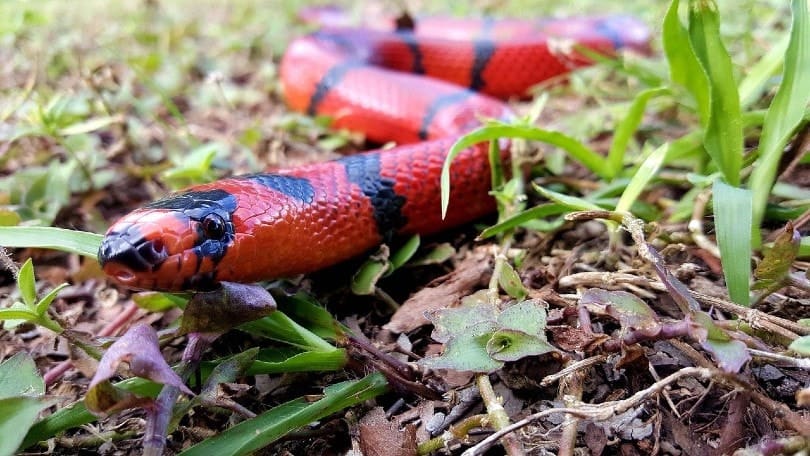When you hear the name, New York most likely you’re thinking of the city and its urban environment. However, most of this Mid-Atlantic state consists of various ecosystems that make ideal habitats for snakes, 17 to be exact. It may surprise you to learn that the tally also includes three venomous snakes in New York and two state-endangered species.
However, all snakes are protected animals in the state. That means that you can’t capture or trap wild specimens. Even wildlife control officers have to have a permit to do their job. However, many species are captive-bred and found in pet stores.

The 17 Snakes Found in New York
1. Eastern Hognose Snake

| Species: | Heterodon platirhinos |
| Longevity: | Up to 7 years |
| Good to own as a pet?: | No |
| Legal to own?: | Yes (captive-bred) |
| Adult size: | Up to 24” |
| Diet: | Carnivorous |
The most interesting thing about the Eastern Hognose Snake is its behavior to avoid predation. It will puff out the sides of its head to resemble a cobra. If that doesn’t work, it’ll play dead. This species feeds on various animals, from birds to fish to frogs. It’s also unique because it is immune to the toxins that toads secrete. This snake is mildly venomous to humans.
2. Eastern Rat Snake
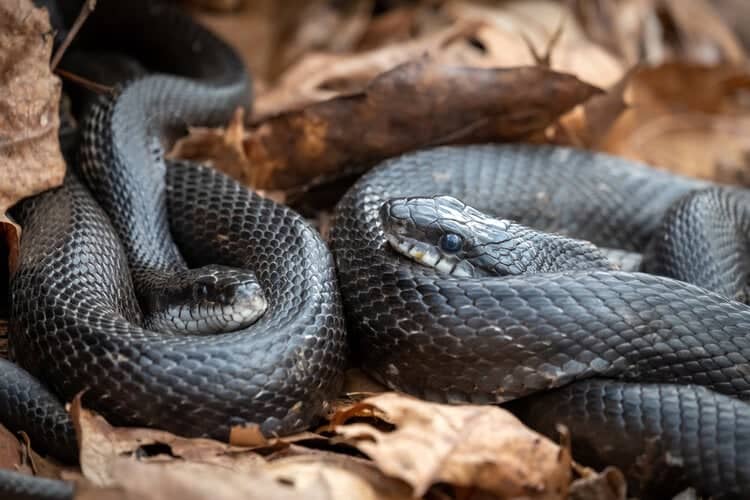
| Species: | Pantherophis alleghaniensis |
| Longevity: | 6 years |
| Good to own as a pet?: | No |
| Legal to own?: | Yes (captive-bred) |
| Adult size: | Up to 6’ |
| Diet: | Carnivorous |
The Eastern Rat Snake is the state’s longest snake. They live all along the east coast and west into the Central Plains. They live in a variety of habitats, particularly dry meadows and forests. It has a diverse diet that includes amphibians, rodents, and birds. This species is unique in that it will constrict its prey like a boa to subdue it.
3. Eastern Ribbon Snake
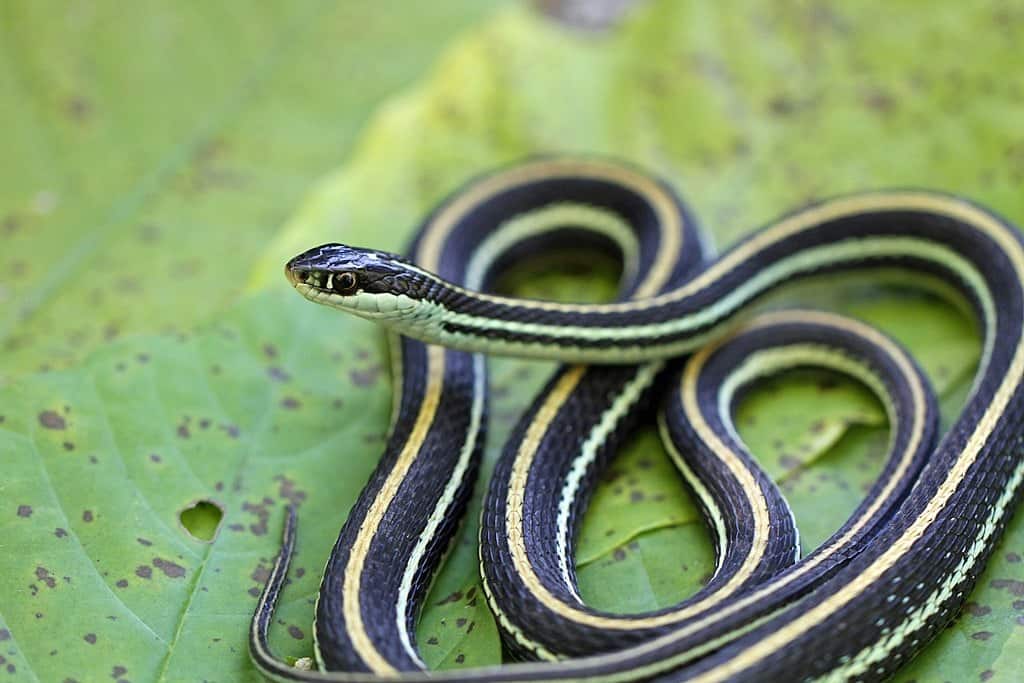
| Species: | Thamnophis sauritus |
| Longevity: | Up to 10 years |
| Good to own as a pet?: | No |
| Legal to own?: | Yes (captive-bred) |
| Adult size: | Up to 3’ |
| Diet: | Carnivorous |
The Eastern Ribbon Snake has a large range that extends north into Canada and west to the Mississippi River. It prefers to live by water with aquatic wildlife its prey. It is a quick-moving animal that uses this trait to its advantage to hunt for food. It also helps the snake avoid predators, such as raccoons and hawks.
4. Northern Black Racer
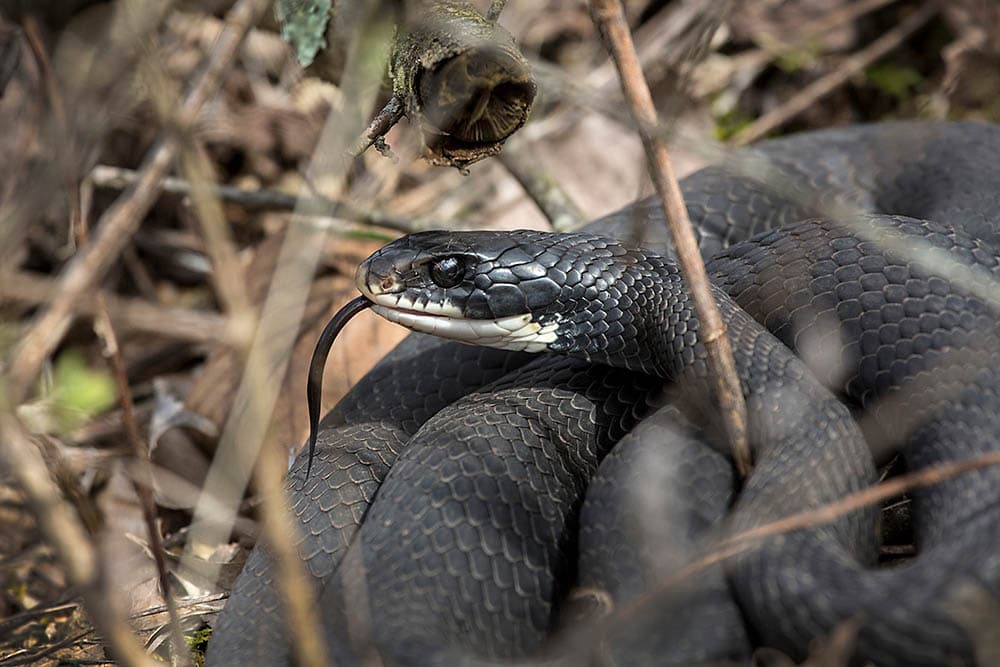
| Species: | Coluber constrictor |
| Longevity: | Up to 10 years |
| Good to own as a pet?: | No |
| Legal to own?: | No |
| Adult size: | Up to 5’ |
| Diet: | Carnivorous |
The Northern Black Racer is another speedy snake that makes good use of it to eat and avoid being eaten. They occupy a wide range of habitats, from wetlands to meadows. While it is non-venomous, its bite can cause serious injuries. They are shy animals that will generally avoid humans. Although its scientific name refers to constrictors, it is a misnomer.
5. Milk Snake

| Species: | Lampropeltis triangulum |
| Longevity: | Up to 20 years |
| Good to own as a pet?: | Yes |
| Legal to own?: | Yes (captive bred) |
| Adult size: | 24 – 36″ |
| Diet: | Carnivorous |
The Milk Snake may look like a Coral Snake, but this species is harmless to humans. You may see it called the Scarlet Snake in reference to this likeness. This reptile prefers edge habitat, whether it’s prairies, woodlands, or farm fields. It’s a secretive animal that you are unlikely to see during the day. They have a larger geographic range than you’d expect for a snake.
6. Northern Brown Snake
| Species: | Storeria dekayi |
| Longevity: | Up to 7 years |
| Good to own as a pet?: | Yes |
| Legal to own?: | Yes (captive bred) |
| Adult size: | 9 – 13” |
| Diet: | Carnivorous |
The Northern Brown Snake is another widespread species that you can find even in southern Canada. Its small size allows it to find hiding places to escape predation. It also affects its behavior, prompting this reptile to adopt a nocturnal lifestyle. While it eats a lot of different foods, it is especially adept at eating snails.
7. Northern Ringneck Snake

| Species: | Diadophis punctatus |
| Longevity: | Up to 20 years |
| Good to own as a pet?: | No |
| Legal to own?: | Yes (captive bred) |
| Adult size: | 10 – 15” |
| Diet: | Carnivorous |
The Northern Ringneck Snake is a weather-tolerant species that you find living in Mexico to Canada. It prefers woodland and wetland habitats that offer plenty of cover. It is an appropriately named animal, referring to its distinctive band around the base of its head. It is an egglayer that makes no investment in its offspring. They are a popular snake among reptile enthusiasts.
8. Northern Water Snake
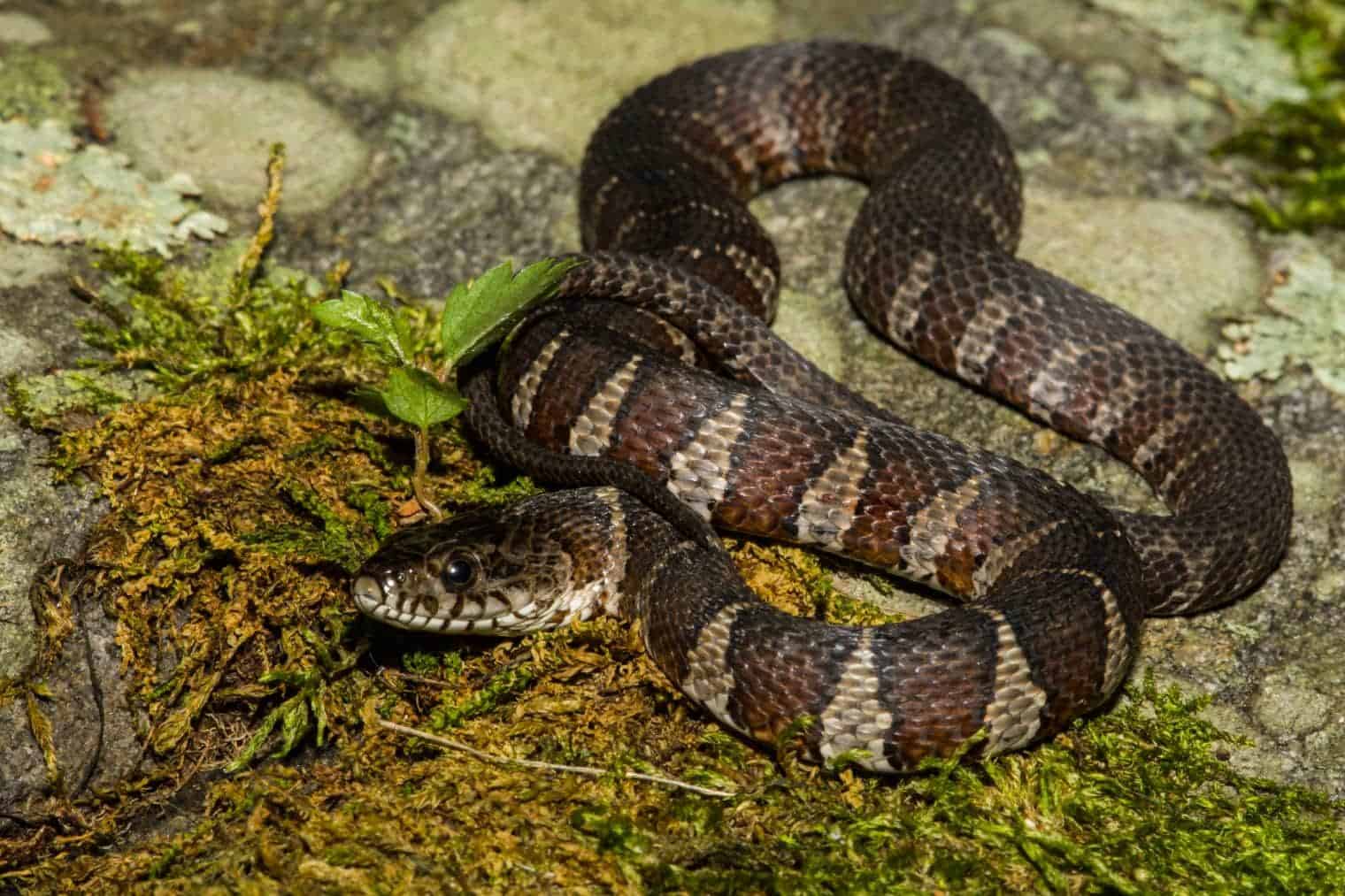
| Species: | Nerodia sipedon |
| Longevity: | Up to 9 years |
| Good to own as a pet?: | No |
| Legal to own?: | Yes (captive bred) |
| Adult size: | 24 – 36″ |
| Diet: | Carnivorous |
The Northern Water Snake is one of the true water snakes of New York. It is an aggressive species that won’t hesitate to bite if disturbed. While they may hang out together, these snakes are solitary for the most part. While they feed on aquatic wildlife, they will also take the occasional rodent or bird. While nonvenomous, you can get a nasty infection if bit by this reptile.
9. Queen Snake

| Species: | Regina septemvittata |
| Longevity: | Up to 19 years |
| Good to own as a pet?: | No |
| Legal to own?: | No |
| Adult size: | Up to 3’ |
| Diet: | Carnivorous |
The Queen Snake prefers watery environments, like the previous species. It is a diurnal animal that you’re likely to see in areas where it is abundant throughout the year. Crayfish are its primary prey, although it will also other aquatic organisms. As you may expect, this diet preference leaves it vulnerable. It is a state-endangered species in New York.
10. Smooth Green Snake
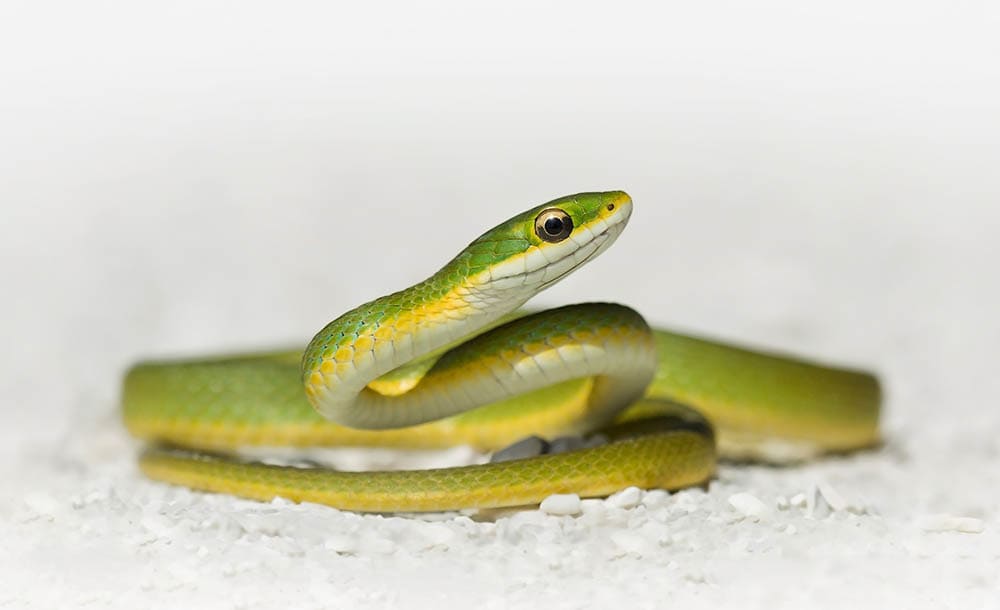
| Species: | Opheodrys vernalis |
| Longevity: | Up to 6 years |
| Good to own as a pet?: | Yes |
| Legal to own?: | Yes (captive bred) |
| Adult size: | 12 – 24” |
| Diet: | Insect eater |
The Smooth Green Snake is unique in that it’s a Nearctic species that lives only in North America. It prefers the habitats that its name suggests. That’s a good thing since it provides excellent camouflage. They feed on insects with the occasional amphibian. While the species is widespread, it is vulnerable to negative environmental pressures.
11. Eastern Worm Snake
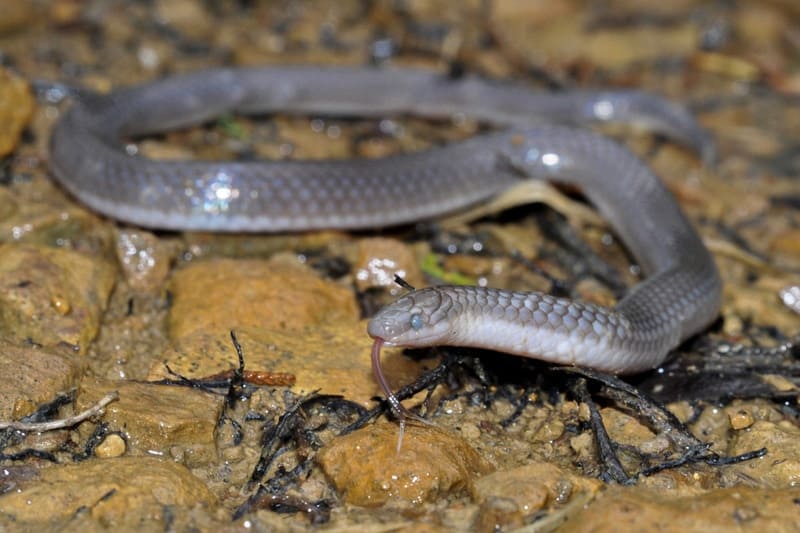
| Species: | Carphophis amoenus |
| Longevity: | Unknown |
| Good to own as a pet?: | No |
| Legal to own?: | Yes |
| Adult size: | Up to 13” |
| Diet: | Carnivorous |
The Eastern Worm Snake is a creature of the forest. New York marks the northernmost reach of its range in the United States. It is a docile animal but will defend itself when necessary. Its name speaks to its primary prey, earthworms. Thus, it’s a secretive species that you’re not likely to see often. It is a vulnerable snake in the state.
12. Common Garter Snake
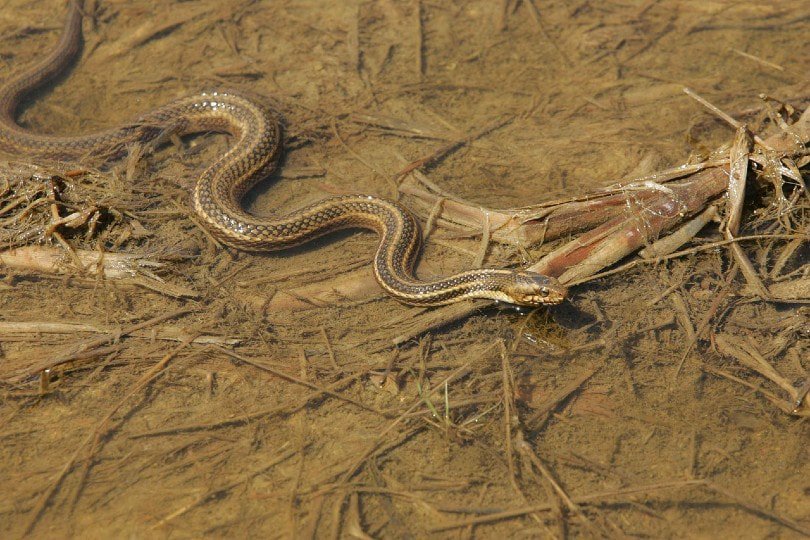
| Species: | Thamnophis sirtalis |
| Longevity: | Up to 20 years |
| Good to own as a pet?: | Yes |
| Legal to own?: | Yes (captive bred) |
| Adult size: | Up to 36” |
| Diet: | Generalist |
The Common Garter Snake is another Nearctic species. You’ll find this snake throughout the eastern part of the continent. The reptile is quite adaptable, which has influenced its evolutionary success. It is also a generalist when it comes to feeding. It can find food wherever it ends up living, whether it’s in a ditch, wetlands, or damp forest.
13. Eastern Garter Snake

| Species: | Thamnophis sirtalis sirtalis |
| Longevity: | Up to 20 years |
| Good to own as a pet?: | Yes |
| Legal to own?: | Yes (captive bred) |
| Adult size: | Up to 26” |
| Diet: | Generalist |
The Eastern Garter Snake is a subspecies of the common variety. Like its namesake, it is an abundant reptile that adapts to a variety of habitats, including human dwellings. Their diet is more specialized, feeding primarily on amphibians and earthworms. However, it will take what it can find, which is another factor in its favor.
14. Northern Redbelly Snake
| Species: | Storeria occipitomaculata |
| Longevity: | 4 years |
| Good to own as a pet?: | Yes |
| Legal to own?: | Yes (captive bred) |
| Adult size: | 8–10” |
| Diet: | Usually gastropods |
The Northern Redbelly Snake is another widespread woodland species that fits in well with the ecosystems of New York. It prefers to hide instead of basking out in the open. That’s due in part to its small size, which makes it vulnerable to predations. While it’s usually diurnal, it can change its habits to fit the weather conditions and become nocturnal.
15. Eastern Copperhead

| Species: | Agkistrodon contortix |
| Longevity: | Up to 20 years |
| Good to own as a pet?: | No |
| Legal to own?: | No |
| Adult size: | Up to 30” |
| Diet: | Carnivorous |
The Eastern Copperhead is the first of three venomous species in New York. Fortunately, it is uncommon. While juveniles feed on insects, adults have a broader diet that includes rodents. You’ll find this snake—hopefully, not—along streams and in forests. Its name refers to its bands, which offer excellent camouflage. It is not an aggressive animal but will defend itself when necessary.
16. Timber Rattlesnake
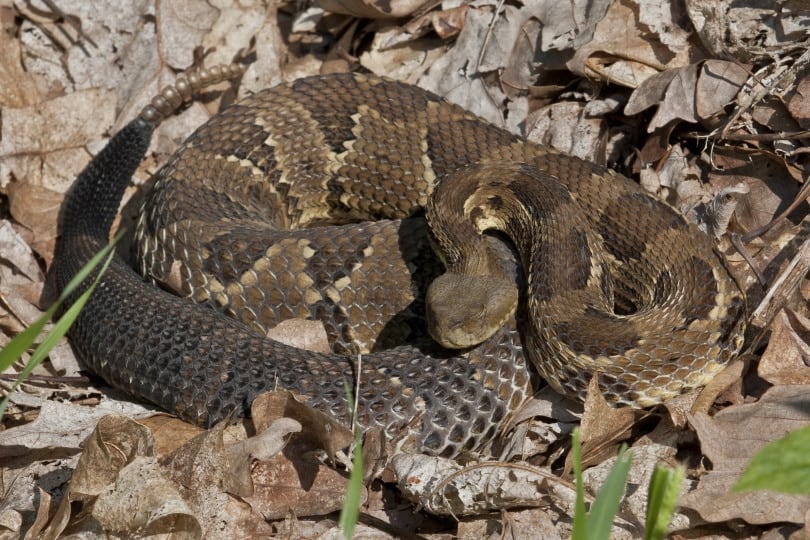
| Species: | Crotalus horridus |
| Longevity: | Up to 30+ years |
| Good to own as a pet?: | No |
| Legal to own?: | No |
| Adult size: | Up to 4’ |
| Diet: | Carnivorous |
The Timber Rattlesnake differs from many reptiles because of its parental investment in its young. It’s likely a function of its long lifespan. They are nomadic and will travel to summer hunting areas. They detect their warm-blooded prey with their pit organs. Populations of this species are stable throughout its range. However, it is vulnerable to habitat encroachment.
17. Eastern Massasauga
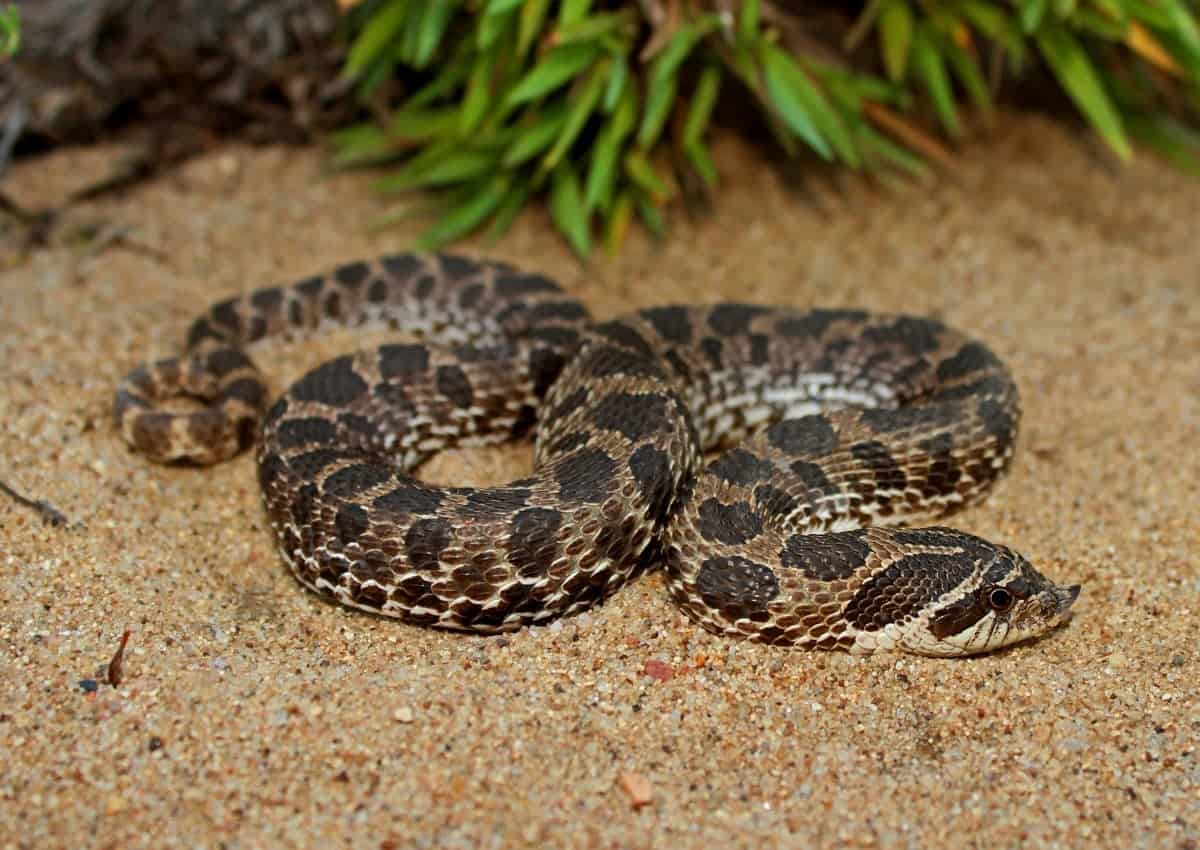
| Species: | Sistrurus catenatus |
| Longevity: | Up to 20 years |
| Good to own as a pet?: | No |
| Legal to own?: | Yes |
| Adult size: | Up to 30” |
| Diet: | Carnivorous |
The Eastern Massasauga is yet again another Nearctic species. It is relatively short compared to other related snakes. It is a wetland species that prefers several different types of this habitat, such as swamps and marshes. It is another pit viper that is adapted to feeding on warm-blooded animals. It can also harm humans with its venom. Fortunately, it isn’t an aggressive snake.

Conclusion
New York has an interesting collection of snakes that includes ones you’ll see east of the Mississippi River and a few unusual ones. That’s part of what makes these animals so fascinating. There are also three venomous snakes in New York. While they are uncommon, it still behooves you to be able to identify them. Luckily, they’ll give you a wide berth.
Featured Image Credit: cubialpha, Pixabay
